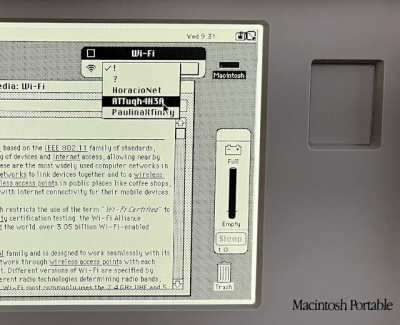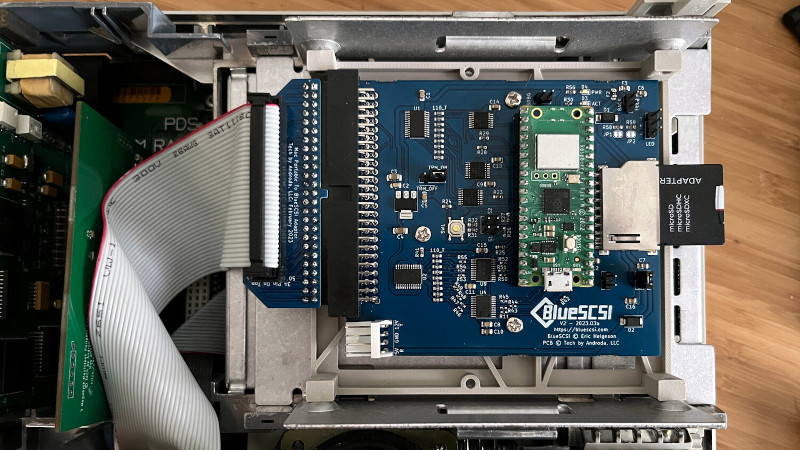The Macintosh Portable was possibly one of the coolest computing devices to be seen with back at the end of the 1980s, providing as it did a Mac in a slightly nicer version of the hefty luggable portables of the day than the PC world could offer. Inside was a mere 68000, but it ran Mac OS system 6 and looked light years ahead of any comparable PC in doing so.
 Back in 1989 it wasn’t even the norm for a computer to have built-in Ethernet, and WiFi was still a gleam in the eye of some Dutch engineers, so how has [Joshua Stein] managed to get his Mac Portable on a wireless network here in 2023? The answer contains a few surprises.
Back in 1989 it wasn’t even the norm for a computer to have built-in Ethernet, and WiFi was still a gleam in the eye of some Dutch engineers, so how has [Joshua Stein] managed to get his Mac Portable on a wireless network here in 2023? The answer contains a few surprises.
When seeing a WiFi upgrade for a classic retrocomputer the usual expectation is that it’s done by emulating a modem connection to the Internet over a serial port. But this wireless network card is a bit different, it’s a real network card capable of being used for much more than just connecting to the Internet.
We have to admit to not knowing that there were SCSI Ethernet interfaces back in the day, and it’s one of these that he’s created. He’s building on a decade’s work in producing disk emulators for the SCSI bus, and he’s taken the code for a Raspberry Pi Pico version and adapted the SCSI driver part to interface with the onboard WiFi on a Pico W. Altogether it’s a beautiful piece of work, and you can color us impressed.















Dutch engineers? Wasn’t WiFi developed by Australian engineers at CSIRO?
Yes but the Aussies and the Dutch where working on Wi-Fi in parallel
https://en.m.wikipedia.org/wiki/Wi-Fi
Per the Wikipedia entry, it seems there was some parallel development occurring.
CSIRO didn’t invent wifi, but they did come up with a key combination of techniques to handle multipath interference that wifi and other high-bandwidth transmission protocols then took advantage of.
https://blog.patentology.com.au/2012/04/analysis-of-csiro-wlan-patent.html
I recall seeing a number of SCSI devices, but not a network connection.
I had an external SCSI Ethernet adapter for my old PowerBook 165c. Worked a treat on 10BASE-T networks.
Me too, I have a DaynaPORT SCSI Link/T. In fact, my individual unit was loaned to the PiSCSI team for the initial emulation work, and for awhile, all of the emulators used the same MAC address as my real one. Just a fun footnote.
We are discussing the “James Bond” of Macs? I almost bought one last swap meet for the VCF, or was it the show last April? Nice machines.
I always find it amusing when some 1980’s computer is connected up to Ethernet or WiFi or some other 1990’s or newer thing using a Raspberry Pi or another micro or SBC with more computing power and RAM than the 1980’s computer. :)
meybe make petition to open old mac os 7
compiler, system source , resourcer
many people can pay for it, similar blender fundation
So it’s connected, now what?
All kinds of stuff! FTP, IRC, and even a bit of web browsing as there are a number of websites popping up that are optimized for vintage machines. It’s actually a pretty rich experience. In fact, having FTP makes vintage computing MUCH easier.
Amazing work by the BlueSCSI team! This really is the ultimate SCSI emulator for vintage Macs. Eric and his team’s contributions to the vintage computing community are nothing short of amazing.
Small detail, but it’s “Wi-Fi” and not “WiFi”. Source: Wi-Fi Alliance, and I’m a pedantic wireless network engineer. :D